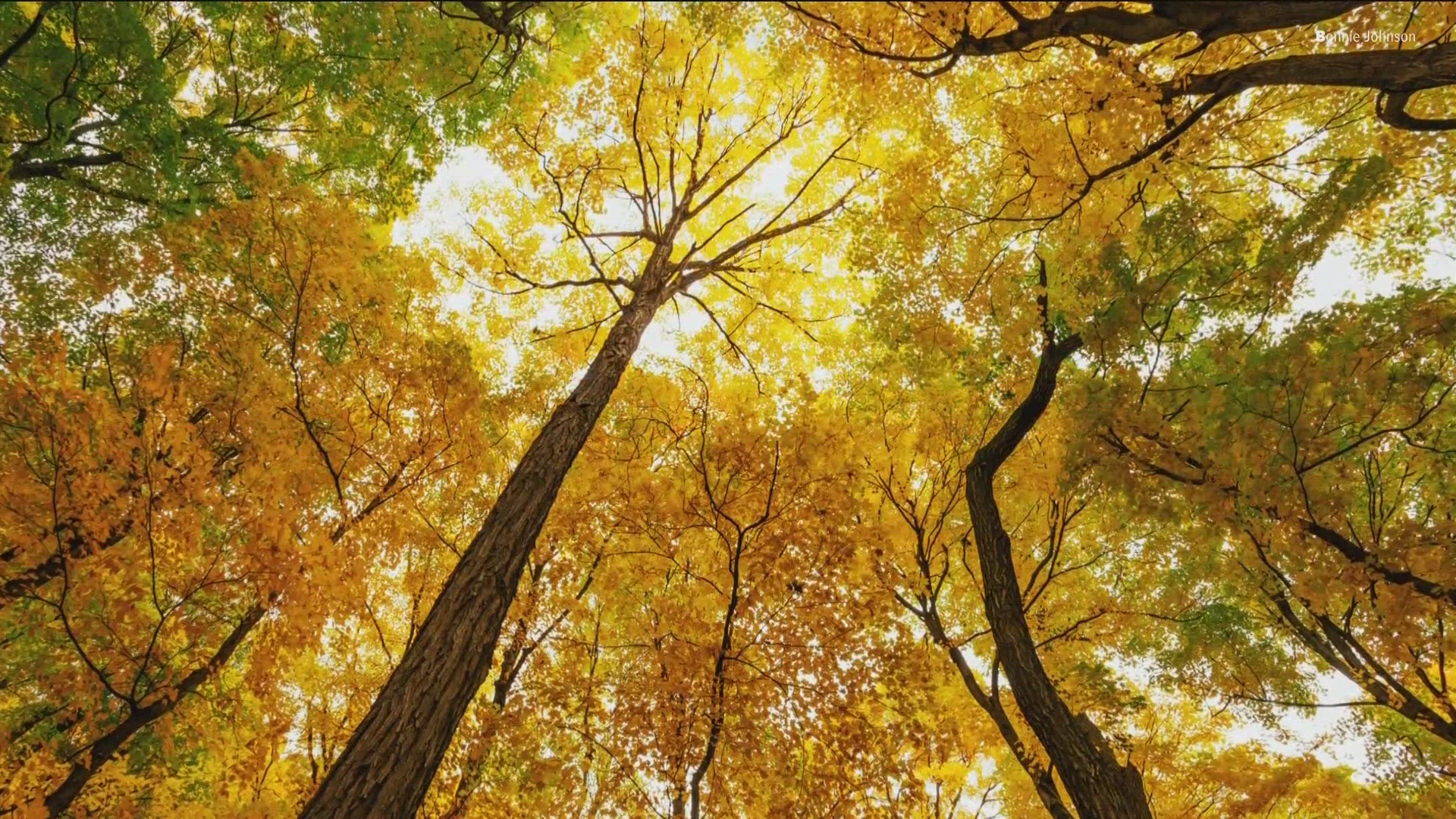ST PAUL, Minn. — While many residents across Minnesota are mourning the passing of an all-too-short summer, there is a blessing that comes with the cooling of temps and the onset of another season.
We are talking, of course, of the changing trees and Minnesota's spectacular fall colors.
The Department of Natural Resources (DNR) on Friday offered its annual Fall Colors Forecast, a guide for those who plan on getting out and taking in the fantastic landscapes of red, orange and yellow that cover the state from mid-to-late September through mid-October.
“Fall is a magical time in Minnesota when nature puts on a beautiful show for all to see,” said DNR Parks and Trails director Ann Pierce. “The crisp air, the vibrant colors and the serene landscapes create the perfect backdrop for outdoor adventures. Whether you’re hiking, biking, camping or simply enjoying the view, fall is the perfect time to connect with nature and enjoy the beauty of Minnesota state parks and other state lands.”
But how brilliant the colors are - and how long they last - depend greatly upon the weather and how the growing season unfolded. The DNR says the relatively wet spring and summer of 2024 has been good for the overall health of trees, but the abundance of moisture has also promoted fungal leaf diseases that may reduce the overall brilliance of the fall landscape due to premature leaf shedding or dead spots and blotches on leaves. That could also impact the length of fall color season.
Peak colors usually last for two weeks or so in zones that cross the state, starting in the northwest and working toward the southeast.
What causes fall colors?
So what exactly drives the process of leaves changing color? The DNR says the main factor is decreased hours of daylight, which causes the process of photosynthesis - the production of sugars that feed leaves - to slow down. That leads to dropping levels of chlorophyll, which gives leaves their green color. When chlorophyll levels drop, other color pigments emerge like red, orange and yellow.
“Brilliant fall color occurs when early fall days are sunny, nights are chilly and there is adequate rainfall throughout the growing season,” explained Brian Schwingle, a DNR forest health specialist.
Temperature, precipitation, wind and the timing of hard freezes can impact when fall colors peak and how long they last. Hard freezes can make leaves drop early, and ran and wind can shorten peak color periods.
Use the DNR's Fall Color Finder
Instead of guessing or calling your Uncle Jed in Grand Marais, log on to the DNR's Fall Color Finder. State park staffers share reports from their area of Minnesota each Wednesday, just in time for those making plans for the coming weekend. The finder tool includes a color-coded map indicating the approximate percentage of leaves that have changed color and recent photos taken by staff and visitors.
New this year is a date slider that allows viewers to look into the future to see what typical colors are like across Minnesota on that day, based on data from previous years.
Here are some additional nuggets of advice from the DNR this fall colors season.
- Sign up for updates. The DNR launches its weekly fall color update newsletter next week, featuring "information, inspiration and tips to encourage Minnesotans to get out and enjoy the changing leaves." You can sign up to receive electronic updates on the Fall Color Finder (mndnr.gov/fallcolor).
- Get information in advance by visiting the DNR website for visitor alerts and seasonal updates.
- Plan for crowds. Many state parks and recreation areas are busy, especially on weekends. You can save time and hassle by buying a state park vehicle permit online before leaving home. They cost $35 for a full year or $7 for one day.
- State forests, scientific and natural areas and wildlife management areas do not require permits and offer beautiful fall color viewing opportunities without the crowds.
- Consider staying overnight. Fall is a great time to camp, with cool but comfortable nights and fewer bugs. You can make camping reservations online.
- Bring binoculars or borrow them from state park ranger stations. Wildlife watching and birding are popular activities in the fall. You can find details on the DNR website’s loaner equipment page.
- Check the DNR events calendar. Many state parks offer programs where visitors can learn about the natural world, take guided hikes, build outdoor skills and more. (mndnr.gov/ptcalendar).
- Be aware of hunting seasons and take safety precautions. State parks only allow hunting during special hunts, which are listed on the state park hunts webpage and will be noted in visitor alerts on park websites.
- Bring a camera and share photos to be included in the photo galleries on the Fall Color Finder website. Images from all state lands can be submitted for possible use on DNR social media channels and other DNR materials by logging on to the Fall Color Finder.

